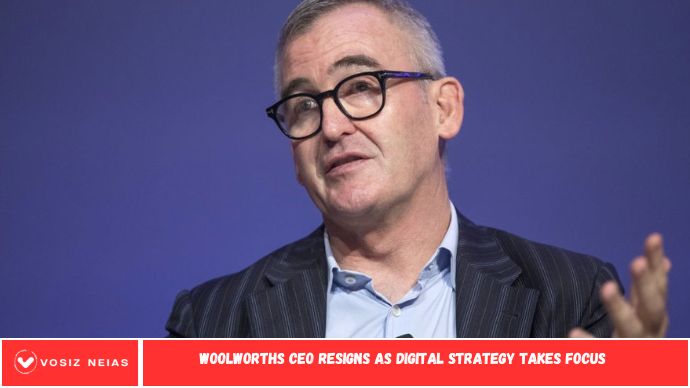Woolworths’ CEO has announced his resignation, triggering industry-wide discussions on leadership, rising retail competition, and the company’s accelerating digital strategy. This article explores the reasons behind the departure, competitive market dynamics, and how digital transformation is expected to shape Woolworths’ future growth and resilience.
Australia’s supermarket landscape is beginning to mirror the retail challenges seen in the UK. Leading chains like Woolworths and Coles are facing growing pressure from budget-focused competitors such as Aldi. In the UK, dominant players like Tesco have experienced significant market share losses to discounters—something Australia’s major retailers are keen to avoid.
Woolworths has responded by initiating a major strategic reset, announced in February, after reporting a decline in profits during the prior half-year. Facing its slowest growth in two decades, the company reported a 3.1% drop in net profit, falling to $1.28 billion by December. In response, Woolworths outlined plans to prioritize long-term value over short-term growth, aiming to unlock $500 million in cost savings while reinvesting in customer service and experience.
At the heart of this transformation are investments in digital technology, IT infrastructure, supply chain efficiency, and big data analytics. Much like the strategies adopted by UK grocers, Woolworths recognizes that staying competitive with discount retailers isn’t just about lowering prices—it also demands operational efficiency and a seamless, omnichannel customer experience.
In a significant leadership shakeup, Woolworths also announced the resignation of CEO Grant O’Brien and Head of Retail Services Penny Winn, signaling the need for new leadership to drive the transformation forward. As part of its broader turnaround plan, the company confirmed it would cut 1,200 jobs, aiming to streamline operations and reposition itself for sustainable growth in a rapidly evolving retail market.
Introduction: Leadership Shift in the Face of Growing Pressure
Woolworths, a cornerstone of Australian retail, now stands at a critical turning point. CEO Brad Banducci’s sudden resignation has raised questions about the company’s strategic direction amid increasing pressure from local competitors, digital-native entrants, and changing shopper expectations.
As the retail landscape rapidly digitizes and margin pressure intensifies, Woolworths is betting on technology, data, and supply chain innovation to stay ahead. This article unpacks the resignation’s context, its implications, and how digital growth is now central to Woolworths’ future.
Why Did the Woolworths CEO Resign?
A Combination of Strategic and External Pressures
Brad Banducci, Woolworths’ long-serving CEO, stepped down amid growing scrutiny over:
- Rising competition from rivals like Coles, Aldi, and independent grocers.
- Public backlash over pricing transparency and cost-of-living concerns.
- Intensifying digital disruption requiring faster, more agile business models.
Internal sources suggest the transition was partly planned but accelerated by reputational pressures and the urgent need for leadership equipped to drive Woolworths’ digital transformation.
Retail Competition Is Reshaping the Market
Aggressive Pricing and New Entrants
Woolworths has traditionally held a dominant market position, but that advantage is eroding as:
- Coles and Aldi expand with sharper pricing strategies.
- Amazon increases grocery offerings through its e-commerce ecosystem.
- Online and mobile-first platforms redefine convenience and loyalty.
According to recent industry data, Aldi’s market share in Australia has grown to over 10%, while online grocery sales surged by more than 25% year-over-year. These shifts are forcing traditional retailers to reinvent themselves—or risk falling behind.
Digital Transformation Now Central to Woolworths’ Future
A Strategic Pivot Already Underway
Even before the leadership change, Woolworths had begun investing heavily in:
- Automated warehouses to reduce operational costs and boost delivery speed.
- Advanced data analytics to enhance inventory management and customer personalization.
- eCommerce infrastructure through partnerships and platform upgrades.
The company’s digital arm now represents a growing percentage of total revenue, signaling a broader strategic pivot. Leadership moving forward is expected to double down on technology, AI integration, and omnichannel customer experiences.
Looking Ahead: What’s Next for Woolworths?
Leadership, Strategy, and Customer Trust
Woolworths has confirmed that a global search for a new CEO is underway, with a strong preference for a leader who understands both retail operations and digital transformation.
Key priorities for the next phase include:
- Rebuilding public trust around value, transparency, and pricing.
- Accelerating digital capabilities across logistics, checkout, and marketing.
- Expanding private label offerings to compete with budget-oriented rivals.
While challenges remain, the company’s vast infrastructure, loyal customer base, and aggressive digital roadmap position it for continued relevance—if executed effectively.
Conclusion
Brad Banducci’s resignation signals more than just a change in leadership—it marks a fundamental transition in how Woolworths plans to compete in a digitally driven retail economy. With competition mounting and customer expectations evolving, embracing innovation is no longer optional—it’s survival. The next CEO will not only need to manage the business but lead its transformation into a more agile, tech-forward enterprise.
FAQs
1. Why did the Woolworths CEO resign?
He stepped down amid competitive pressure, reputational challenges, and the company’s need to accelerate its digital transformation.
2. Who will replace the CEO?
Woolworths has launched a global search for a successor with experience in both retail and digital innovation.
3. How is Woolworths responding to competition?
By investing in technology, supply chain automation, and improved customer experience to stay ahead of competitors like Aldi and Coles.
4. What role does digital transformation play?
It’s now central—Woolworths is modernizing its logistics, analytics, and eCommerce platforms to stay relevant.
5. Is Woolworths still profitable?
Yes, but profit margins are under pressure due to competitive pricing and higher operational costs, increasing the urgency of transformation.
6. What changes are expected next?
Expect deeper investments in AI, better mobile platforms, and improved transparency in pricing and customer engagement strategies.


